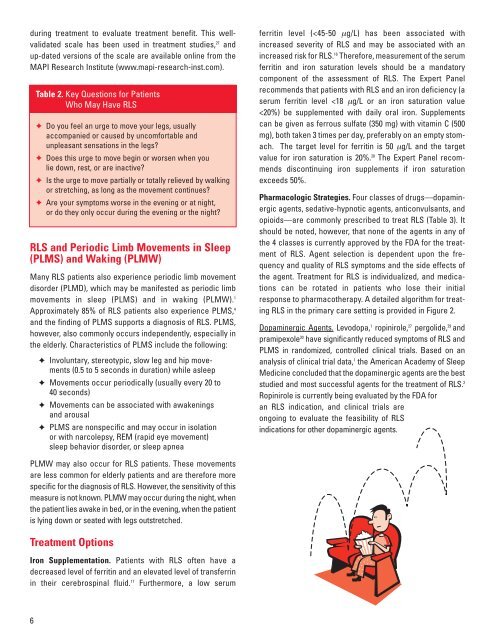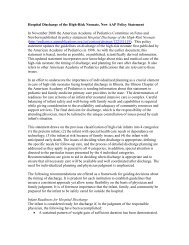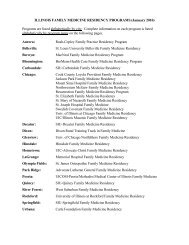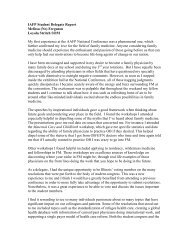Create successful ePaper yourself
Turn your PDF publications into a flip-book with our unique Google optimized e-Paper software.
during treatment to evaluate treatment benefit. This wellvalidated<br />
scale has been used in treatment studies, 27 and<br />
up-dated versions of the scale are available online from the<br />
MAPI Research Institute (www.mapi-research-inst.<strong>com</strong>).<br />
RLS and Periodic Limb Movements in Sleep<br />
(PLMS) and Waking (PLMW)<br />
Many RLS patients also experience periodic limb movement<br />
disorder (PLMD), which may be manifested as periodic limb<br />
movements in sleep (PLMS) and in waking (PLMW). 1<br />
Approximately 85% of RLS patients also experience PLMS, 4<br />
and the finding of PLMS supports a diagnosis of RLS. PLMS,<br />
however, also <strong>com</strong>monly occurs independently, especially in<br />
the elderly. Characteristics of PLMS include the following:<br />
6<br />
Table 2. Key Questions for Patients<br />
Who May Have RLS<br />
✦ Do you feel an urge to move your <strong>legs</strong>, usually<br />
ac<strong>com</strong>panied or caused by un<strong>com</strong>fortable and<br />
unpleasant sensations in the <strong>legs</strong>?<br />
✦ Does this urge to move begin or worsen when you<br />
lie down, rest, or are inactive?<br />
✦ Is the urge to move partially or totally relieved by walking<br />
or stretching, as long as the movement continues?<br />
✦ Are your symptoms worse in the evening or at night,<br />
or do they only occur during the evening or the night?<br />
✦ Involuntary, stereotypic, slow leg and hip movements<br />
(0.5 to 5 seconds in duration) while asleep<br />
✦ Movements occur periodically (usually every 20 to<br />
40 seconds)<br />
✦ Movements can be associated with awakenings<br />
and arousal<br />
✦ PLMS are nonspecific and may occur in isolation<br />
or with narcolepsy, REM (rapid eye movement)<br />
sleep behavior disorder, or sleep apnea<br />
PLMW may also occur for RLS patients. These movements<br />
are less <strong>com</strong>mon for elderly patients and are therefore more<br />
specific for the diagnosis of RLS. However, the sensitivity of this<br />
measure is not known. PLMW may occur during the night, when<br />
the patient lies awake in bed, or in the evening, when the patient<br />
is lying down or seated with <strong>legs</strong> outstretched.<br />
Treatment Options<br />
Iron Supplementation. Patients with RLS often have a<br />
decreased level of ferritin and an elevated level of transferrin<br />
in their cerebrospinal fluid. 17 Furthermore, a low serum<br />
ferritin level (









